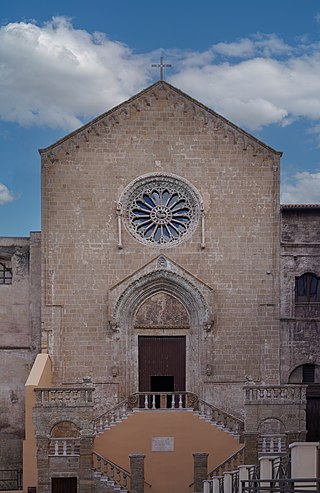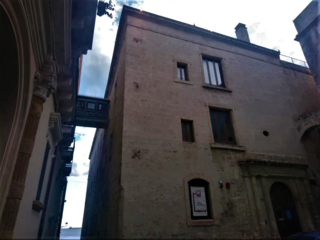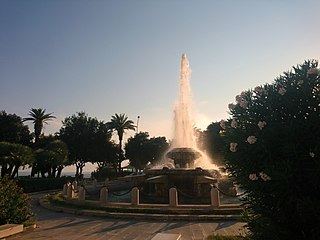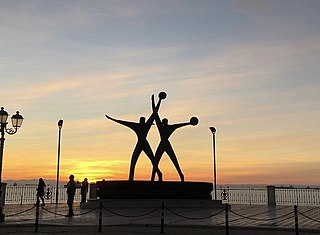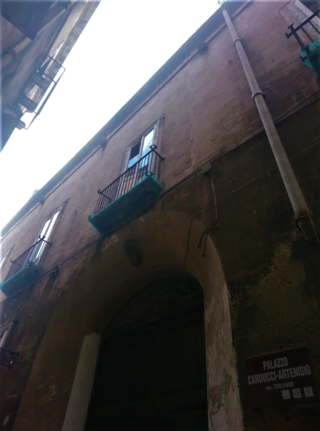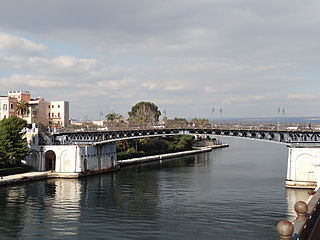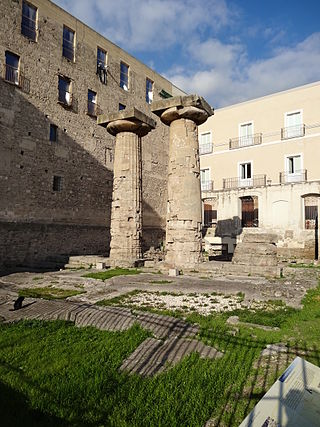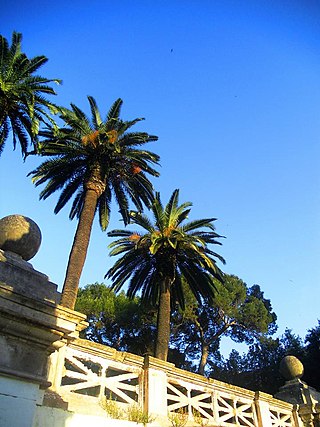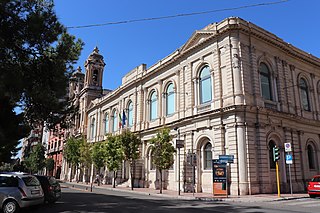12 Sights in Taranto, Italy (with Map and Images)
Legend
Welcome to your journey through the most beautiful sights in Taranto, Italy! Whether you want to discover the city's historical treasures or experience its modern highlights, you'll find everything your heart desires here. Be inspired by our selection and plan your unforgettable adventure in Taranto. Dive into the diversity of this fascinating city and discover everything it has to offer.
Sightseeing Tours in TarantoActivities in Taranto1. Chiesa di San Domenico Maggiore
The church of San Domenico is a Romanesque-Gothic style church that stands on the western front of the historic center of Taranto, whose construction was completed around 1360. The "major" appellation consolidated by Francesco Fella and Enzo La Gioia in the monograph of 1985, it was originally adopted in the 19th century for the current sanctuary of the Madonna della Salute or Monteoliveto, in the period from the post -Napoleonic restoration to 1866, during which the Dominicans moved there. In the sources, in fact, the latter occurs as S. Domenico Maggiore to distinguish it from San Pierto Imperiale, at the time very degraded, popularly appealed S. Domenico Vecchio. It is probable that following the abandonment of the city by the Dominicans, after the restoration of the medieval complex in the early twentieth century and, above all, as a result of the demolition of the convent of St. John who was occluded its view from the port, the newfound monumentality and renewed religious and secular functions, determined the progressive acquisition of the major appellation in the local vulgar, no longer to stand out from a complex homonymous but to sanction its urban survey.
Wikipedia: Chiesa di San Domenico Maggiore (Taranto) (IT), Website
2. Palazzo Pantaleo
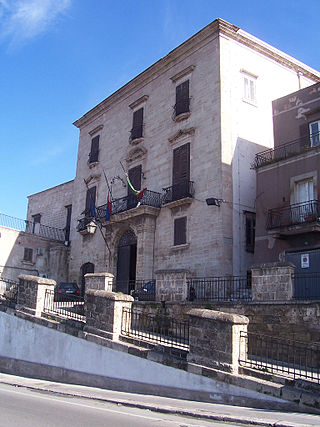
The Palazzo Pantaleo in Taranto is an eighteenth-century building owned by the Municipality. From 2000 to 2007 it housed some collections of the National Archaeological Museum of Taranto in the Old City. It is currently home to the Alfredo Majorano ethnographic museum.
3. Palazzo Amati
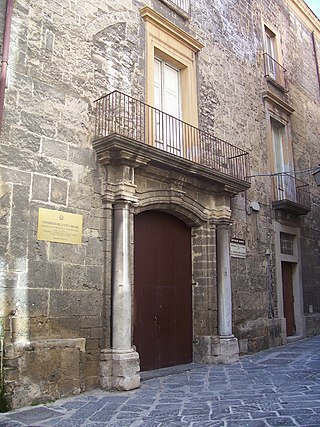
The Palazzo Amati in Taranto is one of the most prestigious palaces in the city's Borgo Antico (Old Town). It was built in the second half of the eighteenth century by Baron Giacomo Amati, through a complex work of union of three minor buildings owned by him since 1748. The palace overlooks the Mar Grande, but the entrance with the imposing portal is located in vico Vigilante.
4. Mudi Museo Diocesano di Taranto
The Diocesan Museum or Mu.di. it is set up in the premises of the sixteenth-century Archiepiscopal Seminary of Taranto in the Old City. The Museum was inaugurated on May 6, 2011 by Archbishop Benigno Luigi Papa. The Mu.di is spread over 4 floors, with a basement, with the remains of an ancient Iapygian village, the ground floor which includes an auditorium with 100 seats, a multipurpose room, and the first and second floors, in which there are the thematic sections: Liturgical, Christological, Marian, Saints, Religious Orders and Confraternities, Cathedral and Archbishops. The exhibition contains over 300 works that span a time span ranging from the seventh to the twentieth century, including sacred furnishings, relics, paintings and sculptures of exceptional cultural value. These are largely from churches no longer open for worship, or from the "Treasure of San Cataldo" and the heritage of the archdiocese.
5. Fontana della Rosa dei Venti
The fountain of the Rose of the Winds of Taranto is a monumental fountain in the city's Borgo Nuovo. It was built to a design by the architect Brunetti in the center of Piazza Ebalia, between Via Berardi and the Vittorio Emanuele III seafront.
6. Monumento al Marinaio di Taranto
The Monument to the Sailor of Taranto is one of the monuments of the city's Borgo Nuovo. Dedicated to the sailors of the Italian Navy, it was made in bronze on Corso Due Mari by the sculptor Vittorio Di Cobertaldo in 1974, at the behest of Admiral Angelo Iachino, commander of the fleet stationed in Taranto during the Second World War, who wanted to donate the work to the city that was the scene of the famous "Night of Taranto".
7. Palazzo Carducci Artenisio
The Palazzo Carducci Artenisio in Taranto is one of the main palaces of the Taranto aristocracy. The building has largely preserved its original noble characteristics, both in the fine decorations and in the furnishings. It was built in 1650 by Ludovico Carducci, a descendant of a noble family from Florence. The entrance to the building is located in vico I Seminario.
8. Ponte Girevole
The Ponte Girevole is a swing bridge in Taranto, Italy, spanning the navigation canal between Taranto's Mar Grande and the Mar Piccolo. The bridge connects Borgo Antico island to the Borgo Nuovo peninsula. The canal was excavated in 1481 as part of the defenses of Taranto. A steel and wood bridge was first built across the canal in 1886. The present steel bridge was built in 1958. Officially titled the Ponte di San Francesco di Paola, the bridge has two swing spans that pivot near the banks of the canal to meet in the middle of the canal. When open, the halves are parallel to the embankment, leaving the width of the canal clear for passage. The bridge is a Taranto landmark.
9. Tempio Dorico
The Temple of Poseidon is a peripteral Doric temple of Magna Graecia located in the modern piazza Castello in the historic centre of Taranto, Italy. It is the oldest temple in Magna Graecia and the only Greek religious structure still visible in the old town of Taranto. The temple dates to the first quarter of the sixth century BC. It fell into ruin in the Middle Ages and parts of it were reused in the construction of other buildings.
10. Giardini Peripato
The Peripato Gardens are a park in the city of Taranto. They occupy an area of almost five hectares located in the Borgo Umbertino, close to the Mar Piccolo. The name refers to the school of Aristotle of which the Taranto scientist and politician Archytas was an important exponent.
11. MAR.TA Museo Archeologico Nazionale di Taranto
The National Archaeological Museum of Taranto (MArTA) is an Italian museum in Taranto, Italy. It exhibits one of the largest collections of artifacts from the Magna Graecia, including the Gold of Taranto. The museum is operated by the Ministry for Cultural Heritage and Activities of Italy.
Wikipedia: National Archaeological Museum of Taranto (EN), Website
12. Monumento ai Caduti
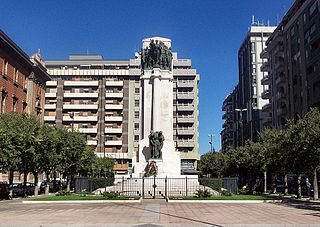
The monument to the Fallen of Taranto is the largest monument in the city's Borgo Nuovo. Dedicated to the citizens who died during the First World War, it was conceived, designed and made of Trani limestone and bronze by the Taranto sculptor Francesco Paolo Como, who was the winner of the special national competition. The site of Piazza della Vittoria was chosen for its installation, where it is still located today.
Share
How likely are you to recommend us?
Disclaimer Please be aware of your surroundings and do not enter private property. We are not liable for any damages that occur during the tours.
